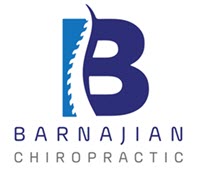Statistics
Whiplash injuries are the most common to occur during a motor vehicle crash and affect a very large part of our society. According to Dr. Arthur Croft at the Spine Research Institute of San Diego, there are 3 million new whiplash injuries (This number is more than the number of injuries actually reported because there are many cases that are not reported or accounted for in statistics generated by NHSTA.) that occur each year in the U.S., with 35-50% of those suffering from long-term pain, and 14% becoming disabled. Their research has also shown that 45% of all persons suffering from chronic neck pain attribute it to a motor vehicle crash injury in their past. Even with the many advances in automotive safety technology, the incidence of whiplash has been on the rise over the past decade. However, whiplash injuries can be largely reduced or prevented with the right patient education. This is talked more about in the Prevention/Safety Tips page of this section.
What is Whiplash?
Whiplash is a term used to describe an injury to the neck and/or supporting structures from a motor vehicle trauma, usually due to a rear-end collision. The injury occurs when the head and neck are violently thrust backward and forward. Cervical acceleration deceleration (CAD) is the appropriate terminology used to describe the mechanism of injury. This can occur with either high speed or low speed rear impact crashes. The thinking that a low speed rear impact crash cannot cause injury if there is no property damage to the vehicle is a myth, which is discussed in the “Myths” section.
Common Whiplash Symptoms
The following are the symptoms most commonly seen after a whiplash injury. (They are listed in order of prevalence):
Neck pain
Headache
Pain between the shoulder blades
Back pain
Numbness or tingling
Pain or weakness in the arms or hands
Difficulty concentrating
Dizziness or light-headedness
Facial pain and jaw-related symptoms
Hearing disturbances
Vertigo (disturbances in movement perception)
Vision disturbances
Trouble swallowing or hoarseness
The symptoms listed above may be caused due to injury to soft tissue structures, such as discs, ligaments, and nerves. The disc may tear, become herniated, or bulge and ligaments may tear with whiplash injuries. Nerves may become stretched, pinched or bruised. Subluxation (partial dislocation) of the vertebrae may occur as well. In severe cases, vertebrae may even fracture.
Treatment for Whiplash
As long as there are no fractures or spinal instability, chiropractic treatment for whiplash injury should begin not too long after the initial date of injury. This is because your body begins to repair and remodel the injured structures within two to three days, at the end of the acute inflammatory phase. If there are any vertebrae that have been misaligned due to the whiplash injury, it is extremely important to correct the affected structures so that they do not heal with scar tissue in an improper position. An affected area of the spine that is not treated properly may lead to problems in the future, such as decreased range of motion, degenerative arthritis, disc degeneration, nerve impingement, and pain. With the appropriate treatment and good patient education, future complications can be avoided.
Treatment at our offices would start with a complete history and evaluation including x-rays if necessary. Once the problem is identified by the doctor, he will thoroughly discuss your specific case and recommend a treatment plan.
